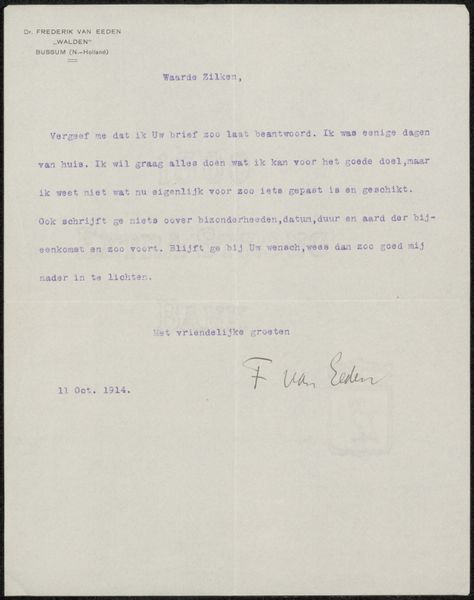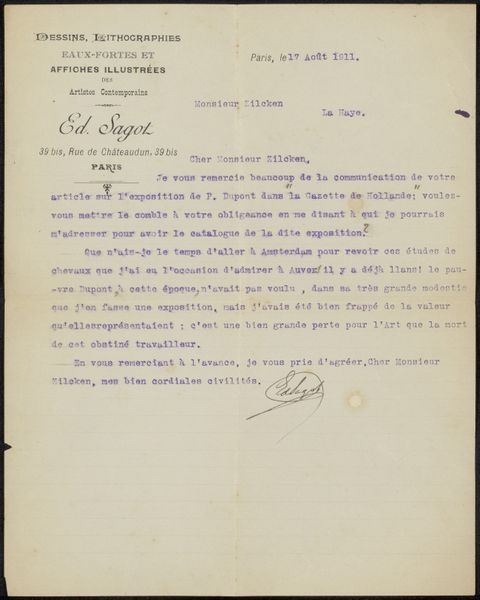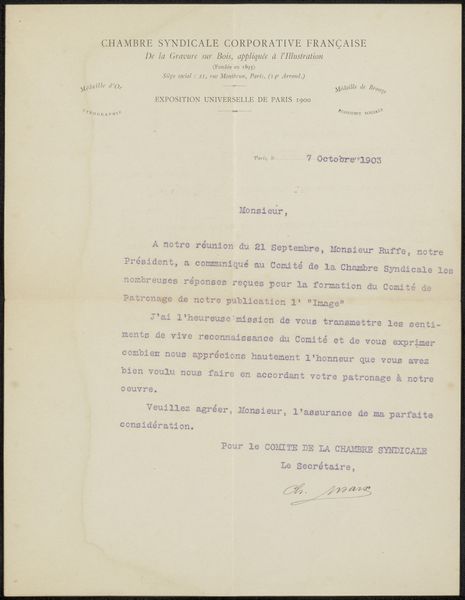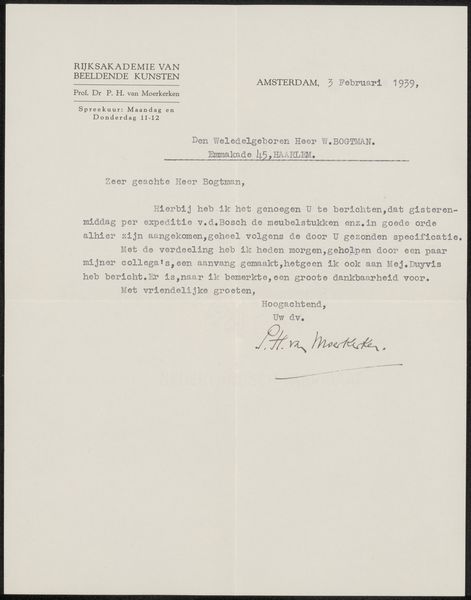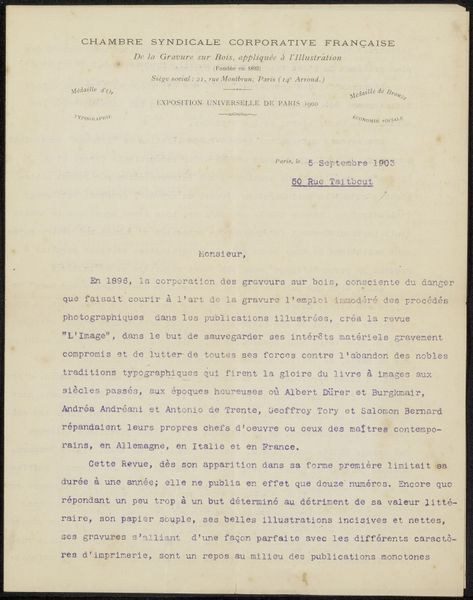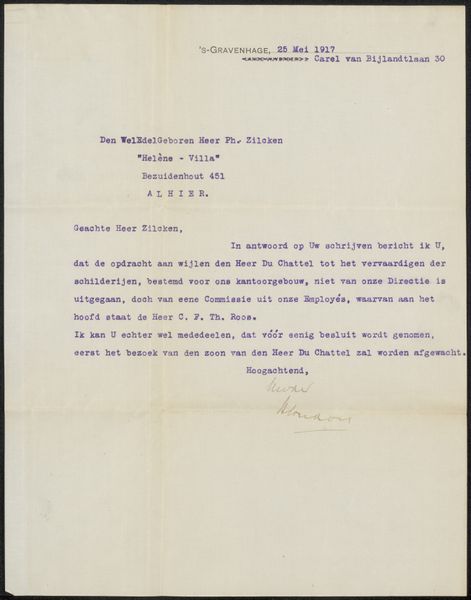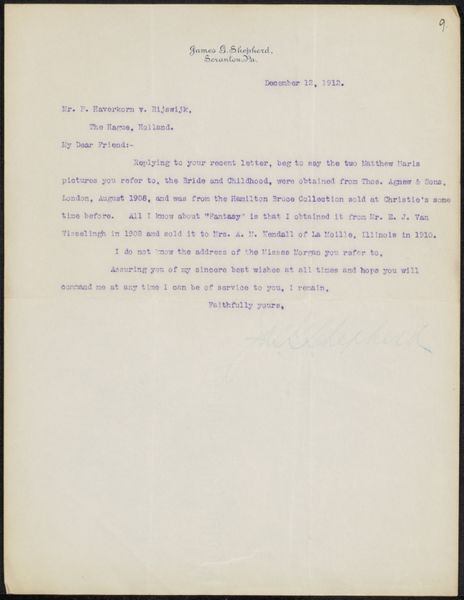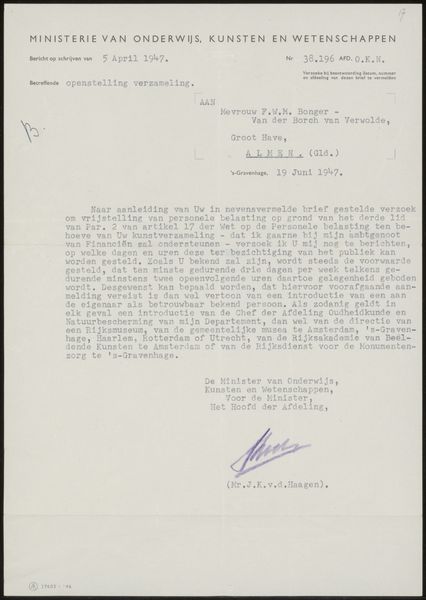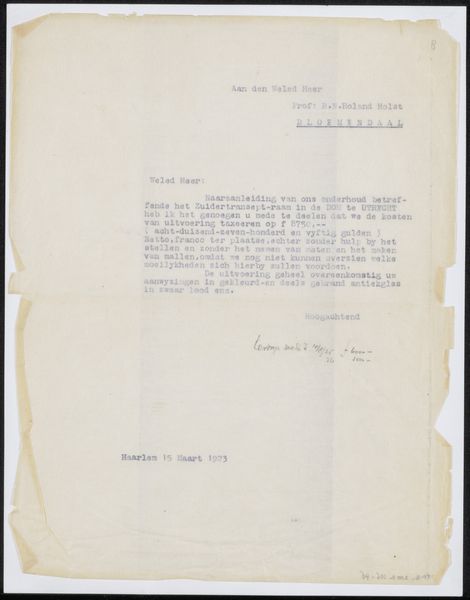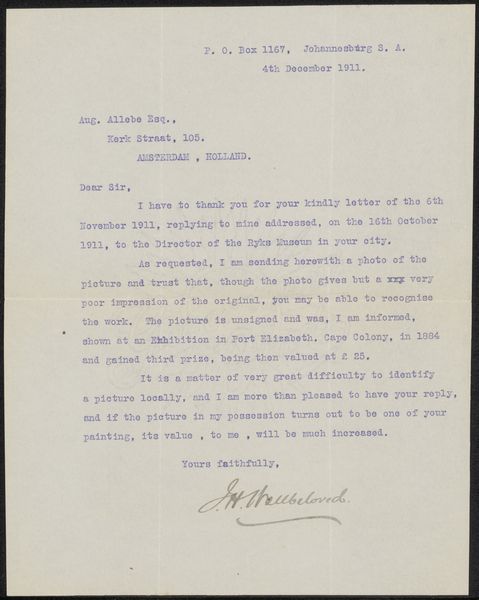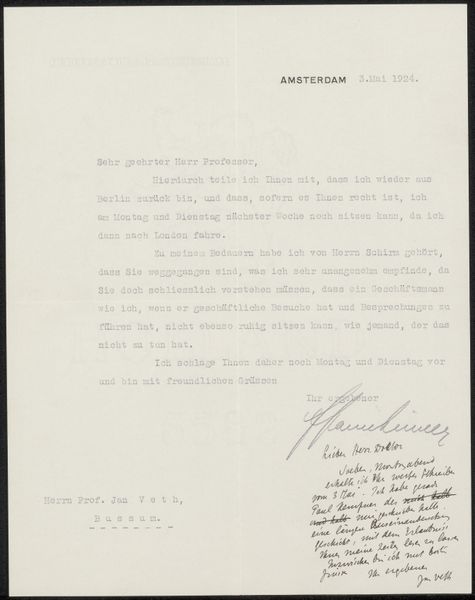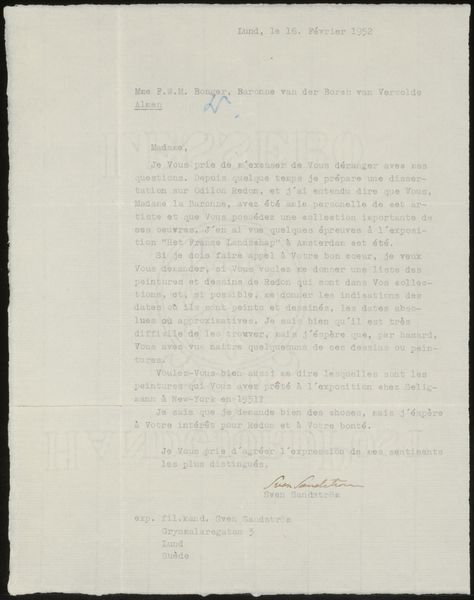
drawing, paper, ink
#
drawing
#
ink paper printed
#
paper
#
ink
Copyright: Rijks Museum: Open Domain
Curator: Welcome. Before us is "Brief aan Pieter Haverkorn van Rijsewijk," a drawing created with ink on paper, possibly between 1913 and 1918 by J.A. de Wilde. Editor: My first impression is the formality, that old-fashioned letterhead, the serious tone. It feels weighty, authoritative. Curator: Indeed. De Wilde was a lawyer, and this is, quite literally, a formal letter. Look closely, and you’ll see that it is a lawyer asserting copyright on behalf of an artist named Matthijs Maris. Editor: Ah, so it's a cease and desist, art edition! It seems De Wilde is warning Pieter Haverkorn van Rijsewijk against reproducing Maris' paintings without permission, invoking the new Copyright Act of 1912. How very bureaucratic and litigious. Curator: Precisely. It underscores the evolving role of law in the art world. As artists gained recognition and their work became commercially valuable, the need to protect their rights became critical. This letter is a document, recording not just the personal transaction, but it also illustrates institutional support for artists. Editor: Right, and it raises interesting questions about who controls artistic reproduction and circulation. On the one hand, copyright can protect artists from exploitation, particularly those who might be marginalized. On the other, it can restrict access to art, reinforcing power structures within the art market and limiting who gets to participate in cultural conversations. Curator: This act also helped ensure artists could profit from their intellectual and material investments in art making. Previously, an artist was sometimes seen more as a craftsperson than the author of intellectual property. Editor: True. Looking at it this way, it becomes part of a longer struggle for artists’ recognition and economic autonomy. Curator: Absolutely. The seemingly dry legal language points to these larger issues about artistic rights and economic structures in the art world. Editor: Exactly, turning what seems like a stuffy document into a really fascinating snapshot of artistic and social history. Curator: Yes, art and law intertwined, both impacting and reflecting societal values and power dynamics. Editor: Definitely. It makes you wonder what Pieter Haverkom van Rijsewijk did next.
Comments
No comments
Be the first to comment and join the conversation on the ultimate creative platform.

